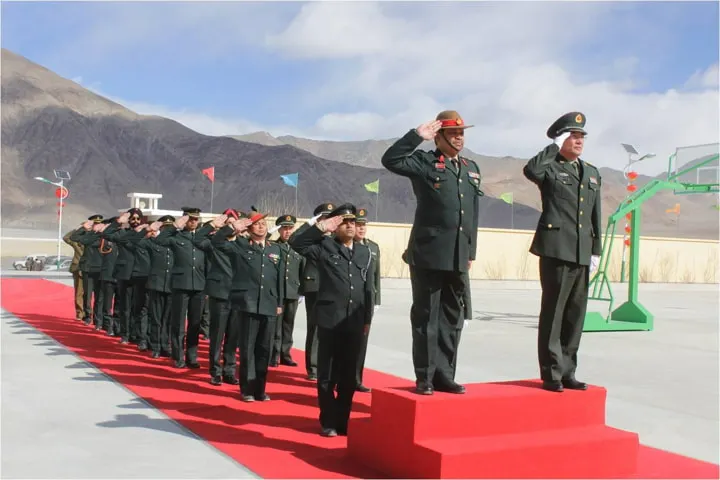As the contours of the China Pakistan Economic Corridor (CPEC) unfold, heightening the threat of a lightning two-front war, India needs to reassess the big picture and redefine its defences in Ladakh.
So far, India has majorly relied on the imposing Saltoro ridge and the Siachen glacier which it controls to block a two-front advance by China and Pakistan.
But this strategic perception may need to fundamentally change as CPEC is raising new and gravely serious security challenges jointly posed by the all-weather axis of China and Pakistan. The marked elevation of the threat to Ladakh calls for deep introspection, which must consider control of ridgelines beyond Siachen to ensure that the gates of India are firmly closed to a joint attack on Ladakh by Beijing and Islamabad.
India needs to fundamentally re-evaluate its threat perception of Ladakh because, with CPEC as the cover, Islamabad and Beijing are planning a new road which poses a big threat to India.
The Hindustan Times is reporting that Pakistan and China are proposing a road connecting Yarkand in Xijiang to Muzaffarabad, the capital of Pakistan Occupied Kashmir (POK). The road will pass through the Shaksgam Valley. This is a 5193-square-kilometres of territory that Pakistan illegally ceded to China in 1963.
The Chinese have already heavily militarised Yarkand. And there is a strategic reason why the troops of the People’s Liberation Army (PLA) and massive equipment has been pumped into this area. Three branch lines of connectivity radiate from Yarkand. Located half-way between Kashgar, the starting point of CPEC, and Khotan, Yarkand is at the junction of a road heading north toward Aksu. Second, the Xinjiang-Tibet Highway or China National Highway 219, built in 1956 starts at Yarkand and heads south and west, across Aksai Chin and into central Tibet.
From Yarkand another important route heads southwest via Tashkurgan Town to the Wakhan corridor. From there troops can be sent to Badakshan in Afghanistan, after crossing the famous Baroghil Pass.
There is no ambiguity in Chinese intent. If given a chance, the PLA would like to completely dominate territories such as the Shaksgam Valley and Yarkand Valley in the north and PoK in the west. In addition, in the east, the PLA has deployed in huge numbers in Aksai Chin opposite Daulet Beg Oldi DBO) sector, the gateway to the famous Karakoram pass. It is amply clear that the PLA wants to cast in stone the 1959 LAC alignment, which is grossly detrimental to Indian territorial interests. After its Ladakh intrusion in the May 2020, the PLA has been stubbornly rejecting India’s patrolling rights in the Depsang bulge, south of DBO with massive brigade-level deployments at Tein Wein Dein (TWD) across the Line of Actual Control (LAC) facing DBO Indian post, the Hindustan Times is reporting.
In the light of the possibility of a two-front war, what should India do? It is obvious that India must exercise control over key ridgelines beyond the Saltoro ridge. Essentially, it means dominating the Teram Shehr and Rimo Glaciers. The Teram Sher glacier is located to the East of Siachen glacier. The Rimo glacier is located to the and south of Shaksgam and Yarkand Valleys. Under India’s control, these glaciers provide access to Shaksgam Valley and Yarkand Valley. They also provide depth to the defence of Siachen and DBO sector.
This is all the more necessary as the Chinese are building a road from the Karakoram Pass in the east towards Pakistan. Pakistan is now proposing the Muzaffarabad-Yarkand Valley road, which can put enormous pressure on the Indian positions in Siachen under the cover of promoting trade with China.
With the big picture changing dramatically, it is surprising that at a January 12 press conference ahead of Army Day, the Chief of Army Staff, is, in principle, not opposed to the the idea of demilitarisation of the Siachen Glacier, in case the Pakistanis agree to the 110 km actual ground position line north of NJ 9842.
Also Read: June 26, the day India captured Quaid Post in Siachen 34 years ago




















